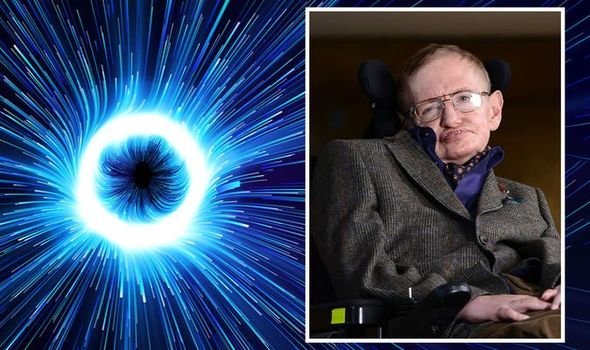Stephen Hawking was RIGHT! New model of the early universe shows primordial black holes formed after the Big Bang and could be the elusive dark matter as theorized by the elate physicists in 1974
- Stephen Hawking proposed primordial black holes existed soon after the Big Bang and could be the elusive dark matter first theorized in 1933
- A new study shows this theory could be true, with a few modifications to Hawking’s proposal
- The study suggests the first stars and galaxies of the universe would have formed around black holes
- This allowed black holes to grow into supermassive black holes by feasting on gas and stars in their vicinity
- Scientist also say that black holes have been prove, which could account for all the dark matter that has yet to be found
In the 1974, Stephen Hawking and his PhD student Bernard Carr proposed primordial black holes, hypothetical black holes that existed soon after the Big Bang, could be the elusive dark matter first theorized in 1933 -and 47 years later, this theory could be proven.
Astrophysics at Yale, the University of Miami and the European Space Agency (ESA) tweaked the famed psychist’s proposal and created a new model of how the early universe may have formed.
The new model shows that the first stars and galaxies would have formed around black holes, which had the ability to grow into supermassive black holes by feasting on gas and stars in their vicinity, or by merging with other black holes.
‘If most of the primordial black holes were ‘born’ at a size roughly 1.4 times the mass of Earth’s sun, they could potentially account for all dark matter, said Yale professor of astronomy and physics Priyamvada Natarajan, the paper’s theorist.
‘Primordial black holes, if they do exist, could well be the seeds from which all supermassive black holes form, including the one at the center of the Milky Way,’ she continued.
Many experts suggest about 85 percent of all the matter in the universe is dark matter – but for such a great amount, it has never been seen nor detected.
Black holes, on the other hand, have been observed and we even have a picture of one to prove their existence.
Hawking and Carr argued that during the first moments of the Big Bang, which happened 13.8 billion years ago, ‘lumpy’ regions that had extra mass may have formed in the universe and turned into black holes when they collapsed.
Their theory, however, did not catch on among the scientific community, but the new study shows that with a few modifications, Hawking may have been right.
‘What I find personally super exciting about this idea is how it elegantly unifies the two really challenging problems that I work on — that of probing the nature of dark matter and the formation and growth of black holes — and resolves them in one fell swoop,’ said Natarajan.
Unraveling the mystery of primordial black holes would also solve another cosmic puzzle that has baffled scientists – the large amount of radiation that has been detected from distant, dim sources scattered around the universe.
Natarajan and her colleagues said growing, primordial black holes would present ‘exactly’ the same radiation signature.



